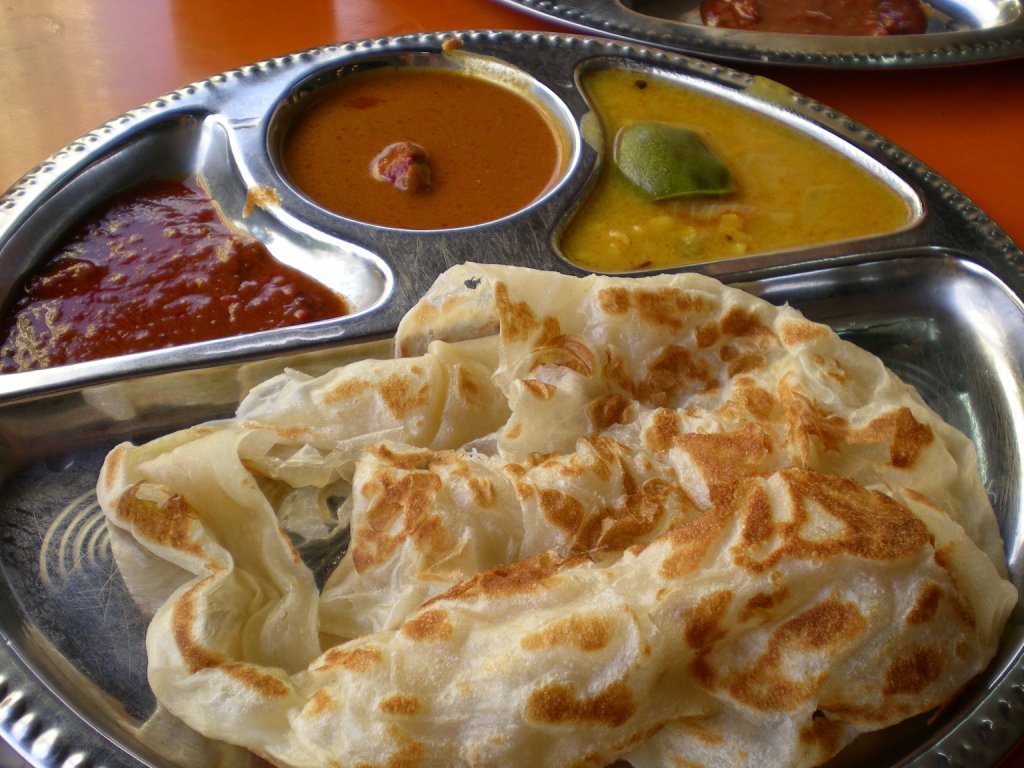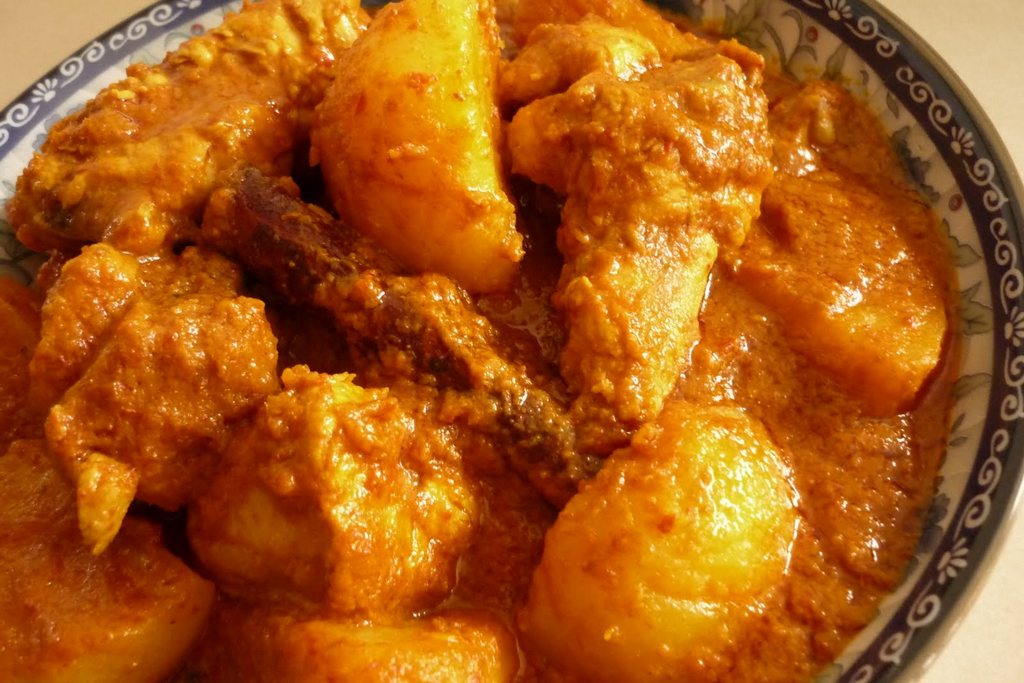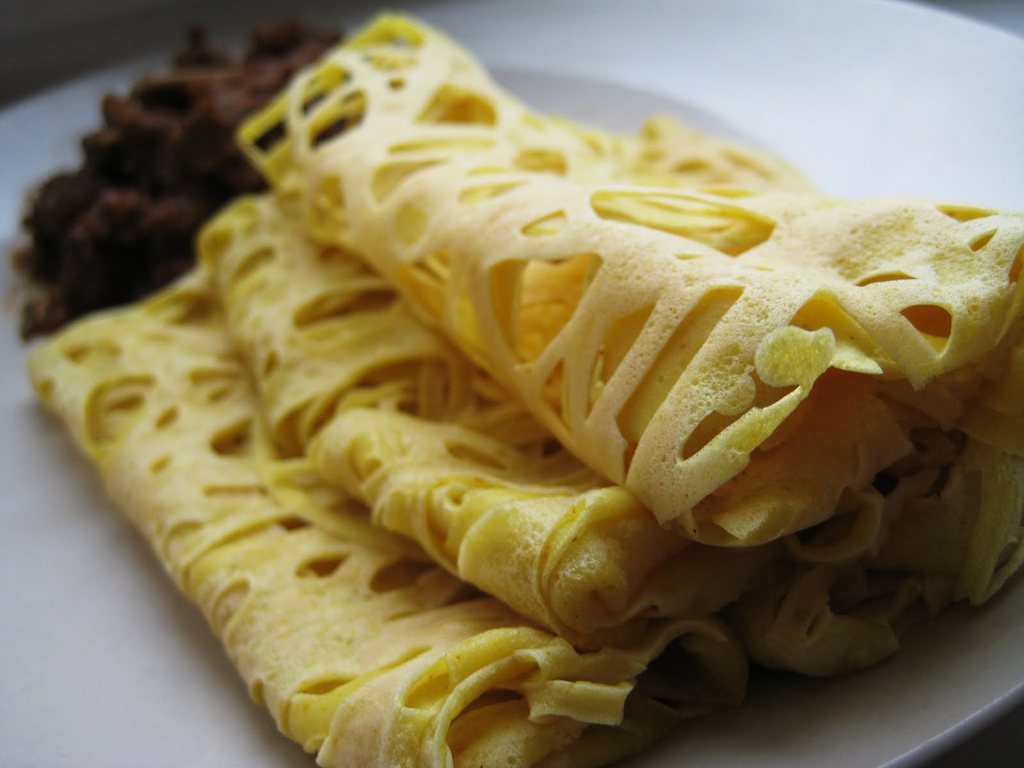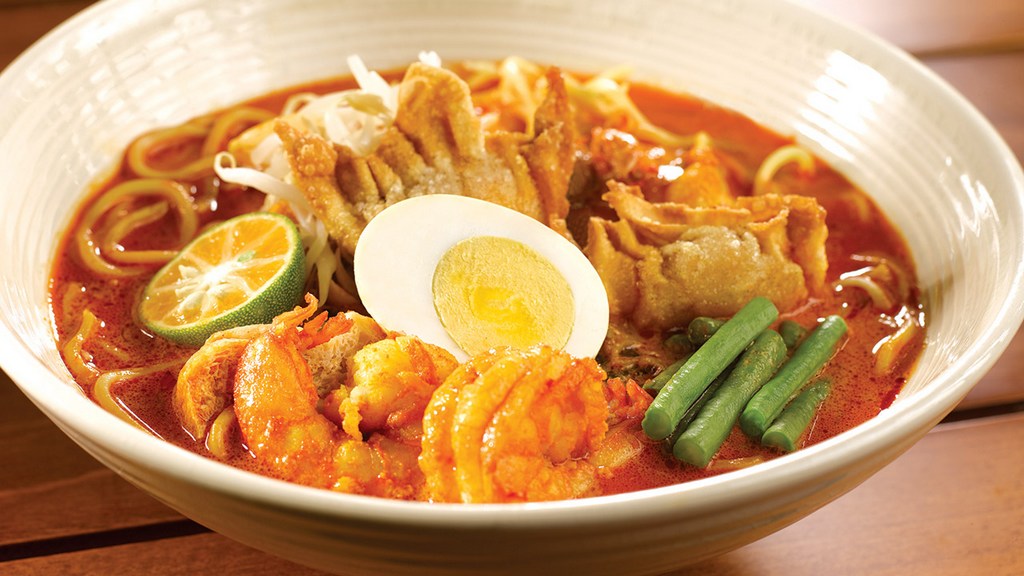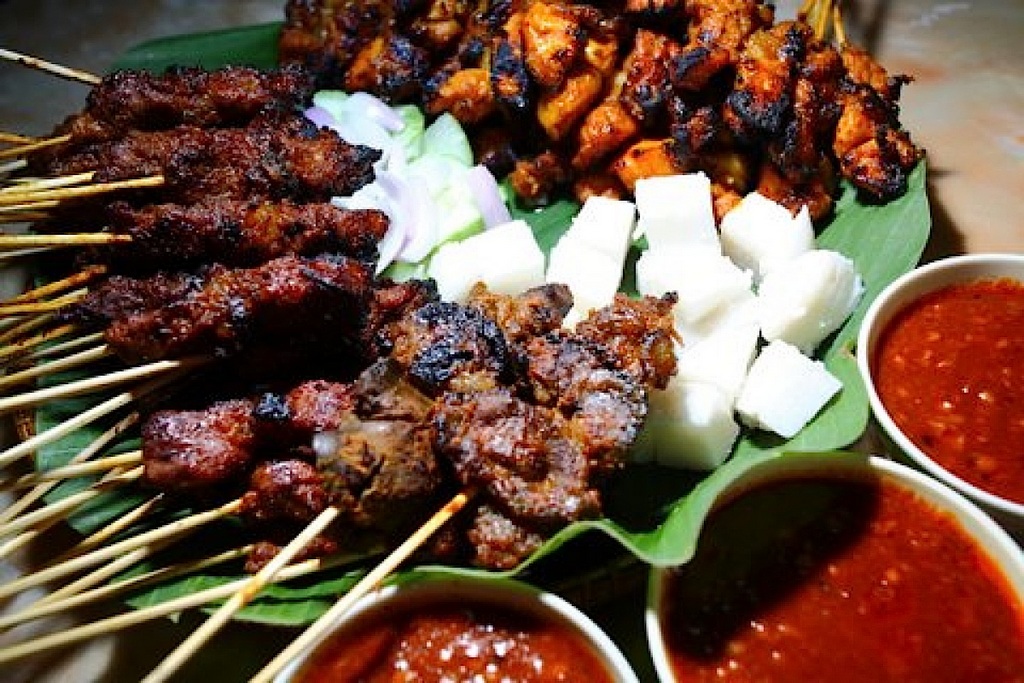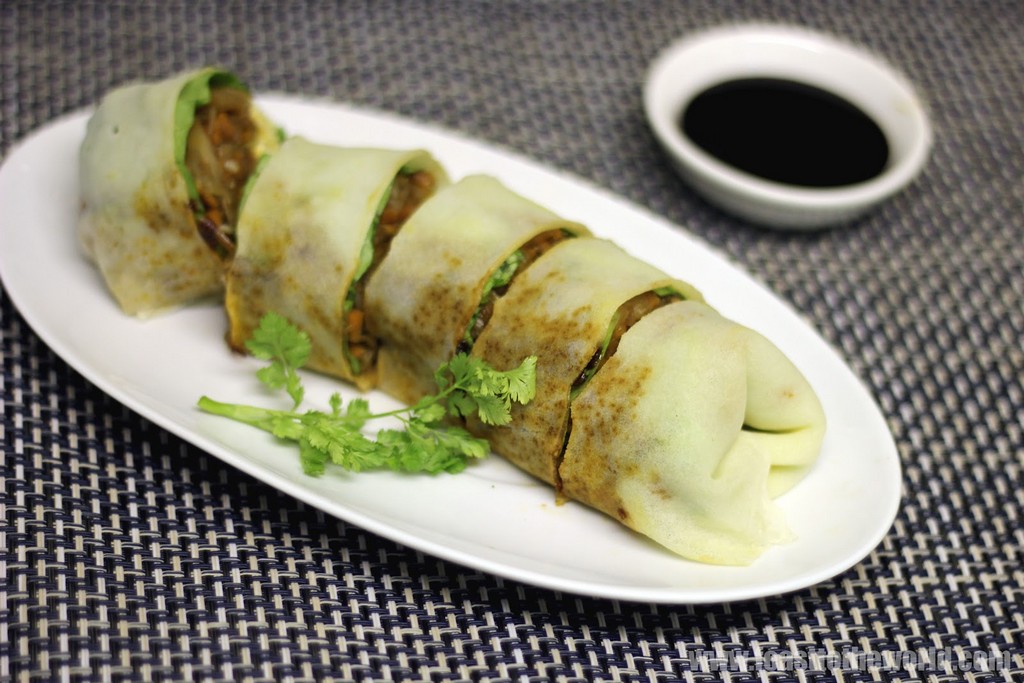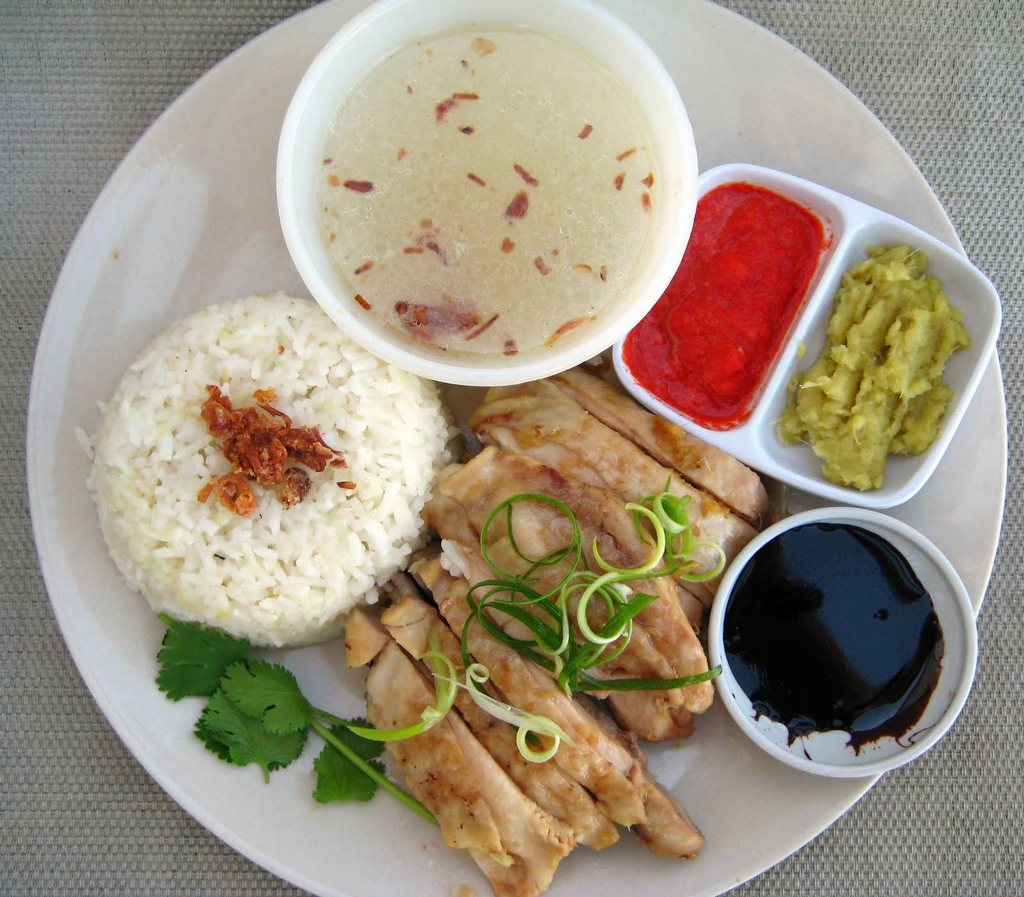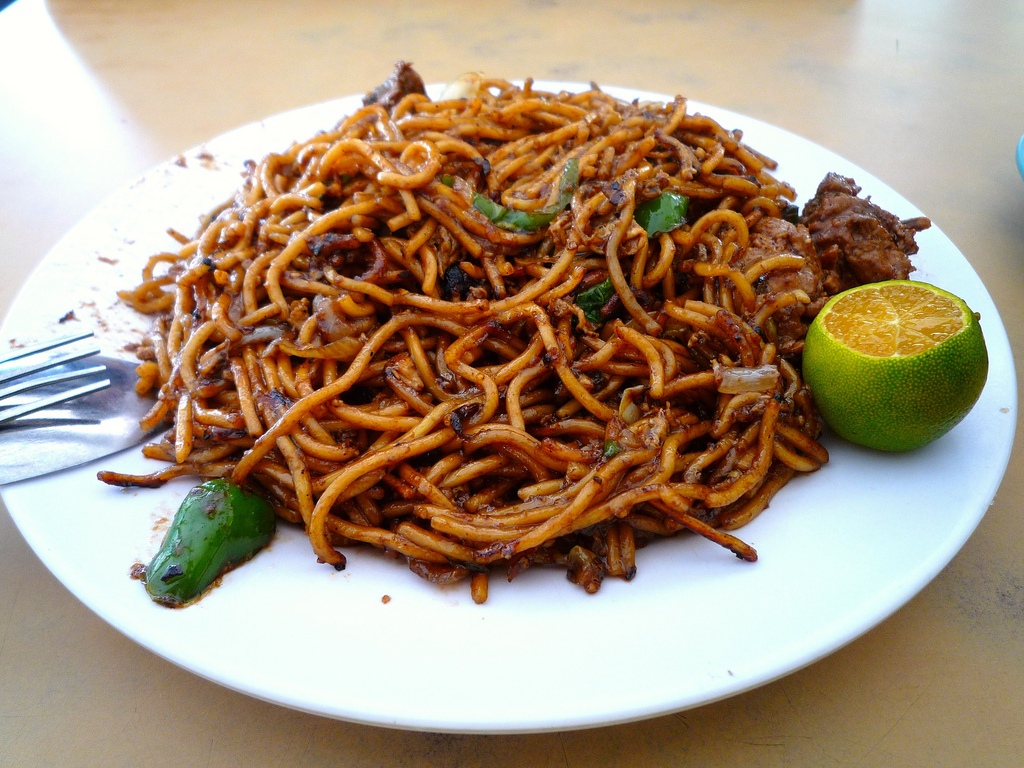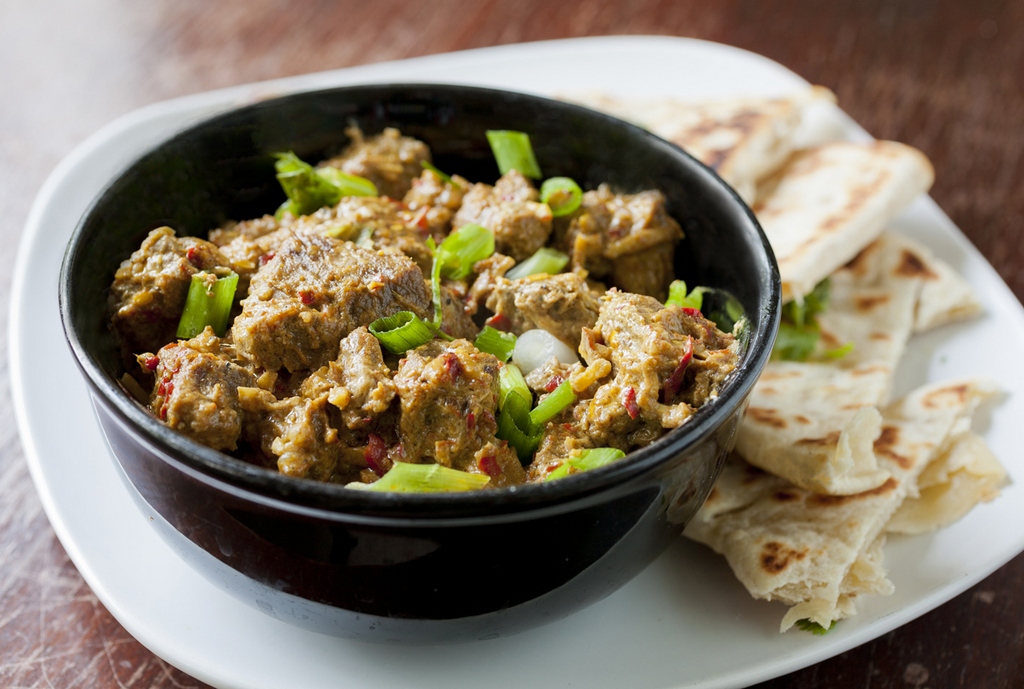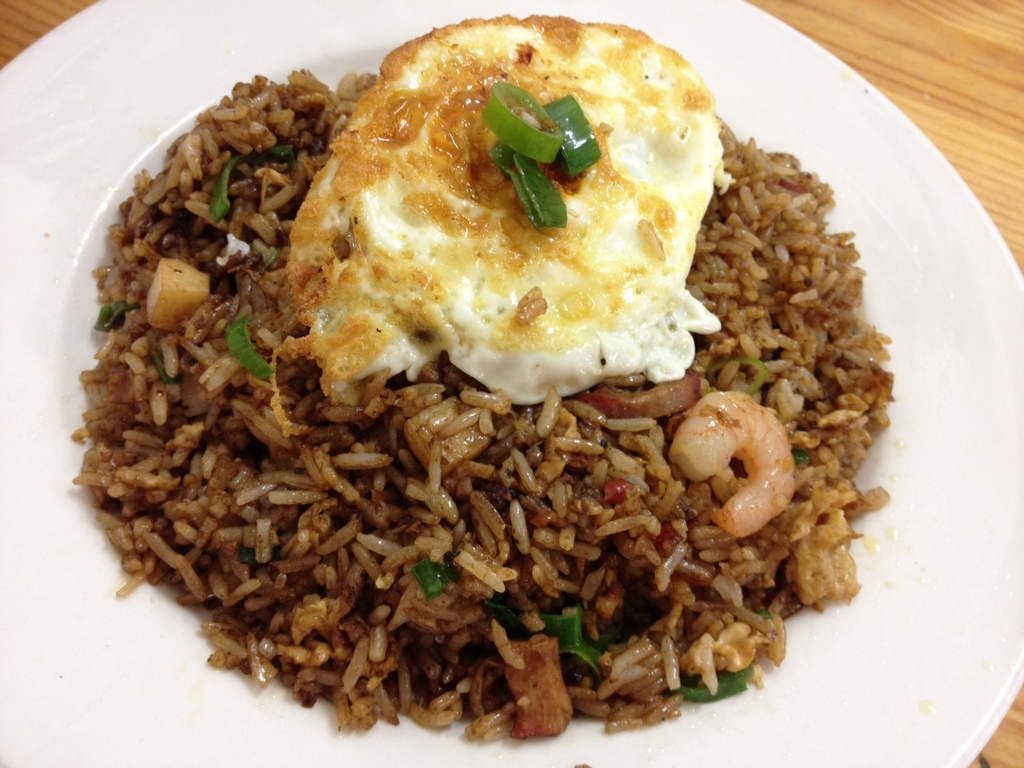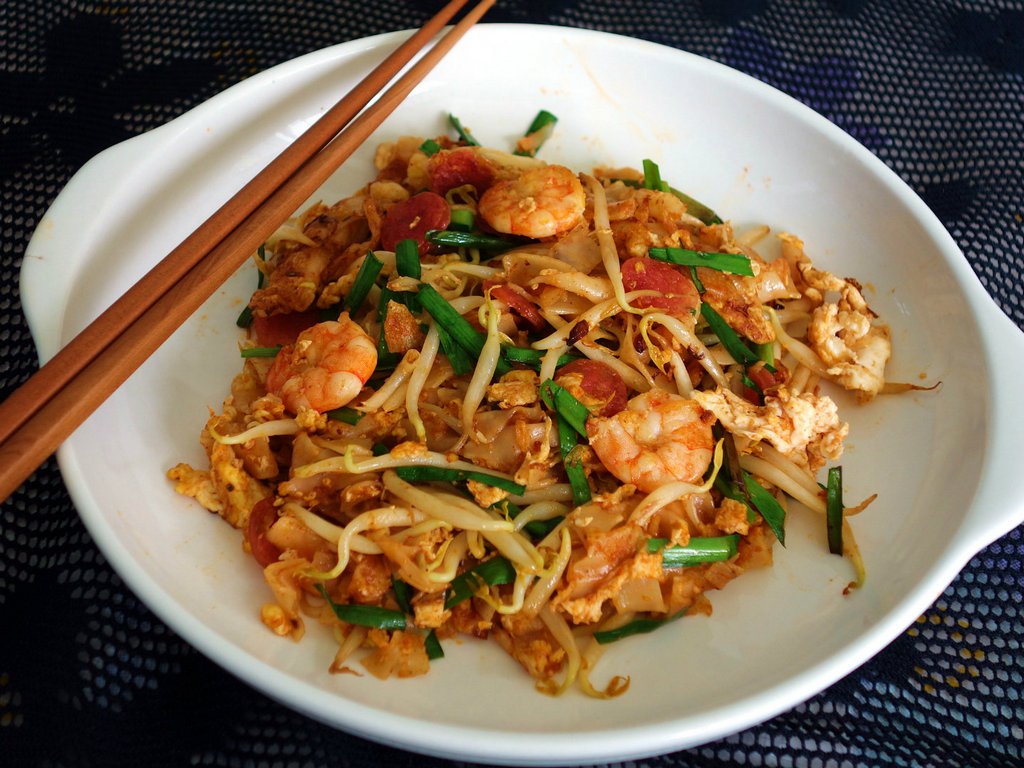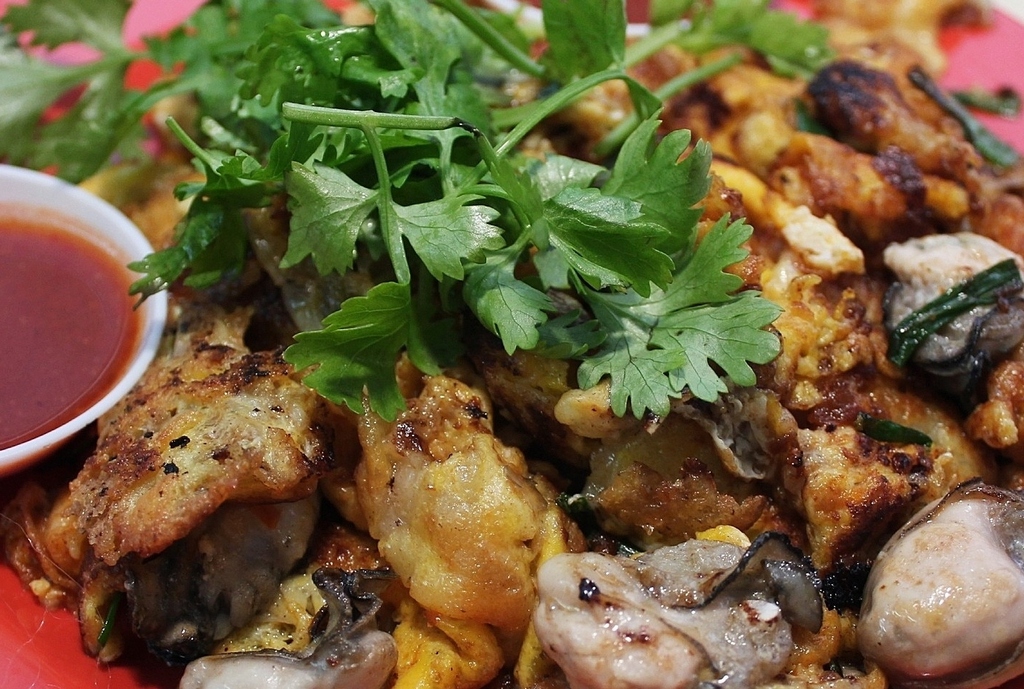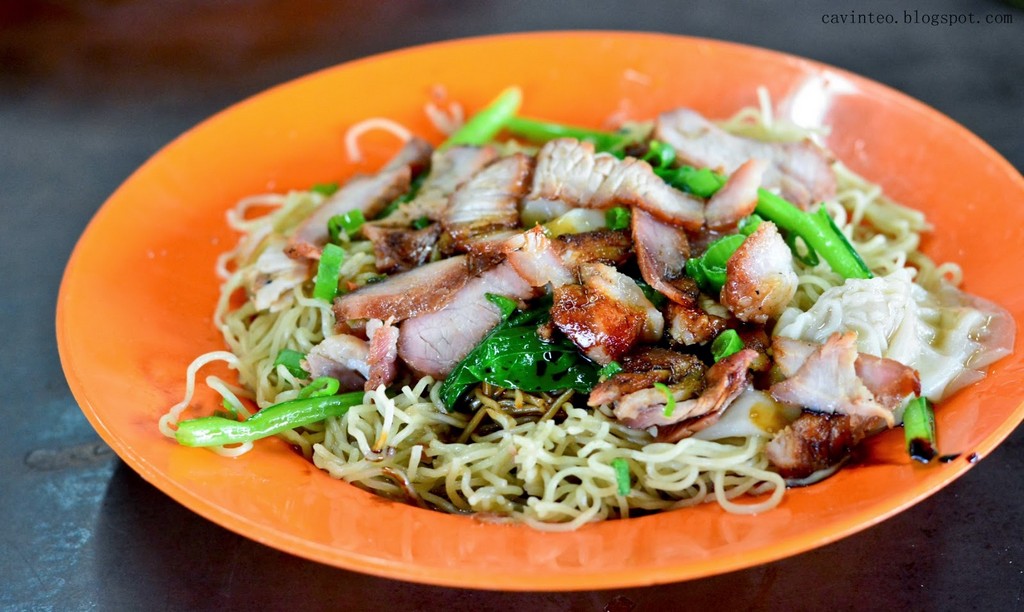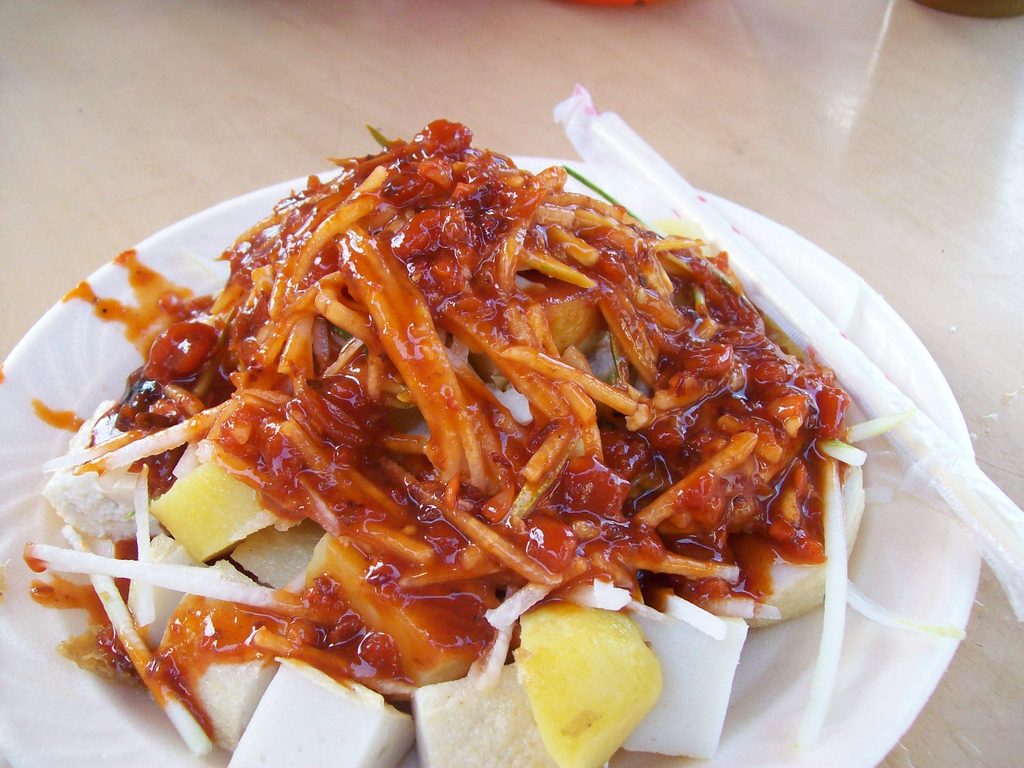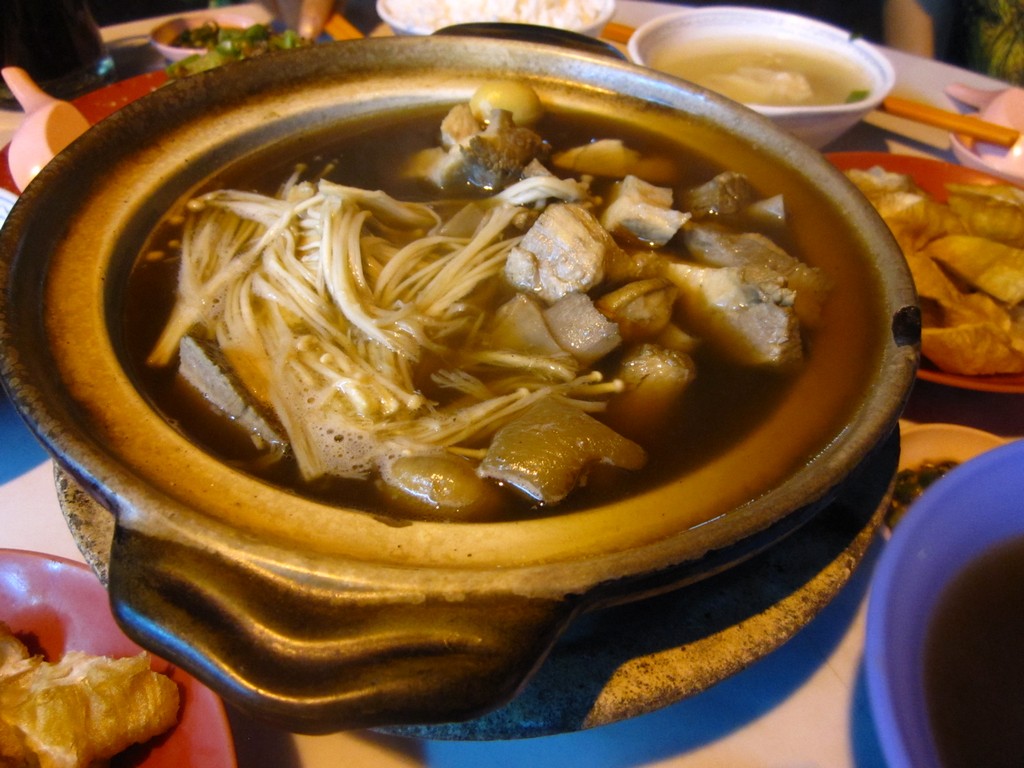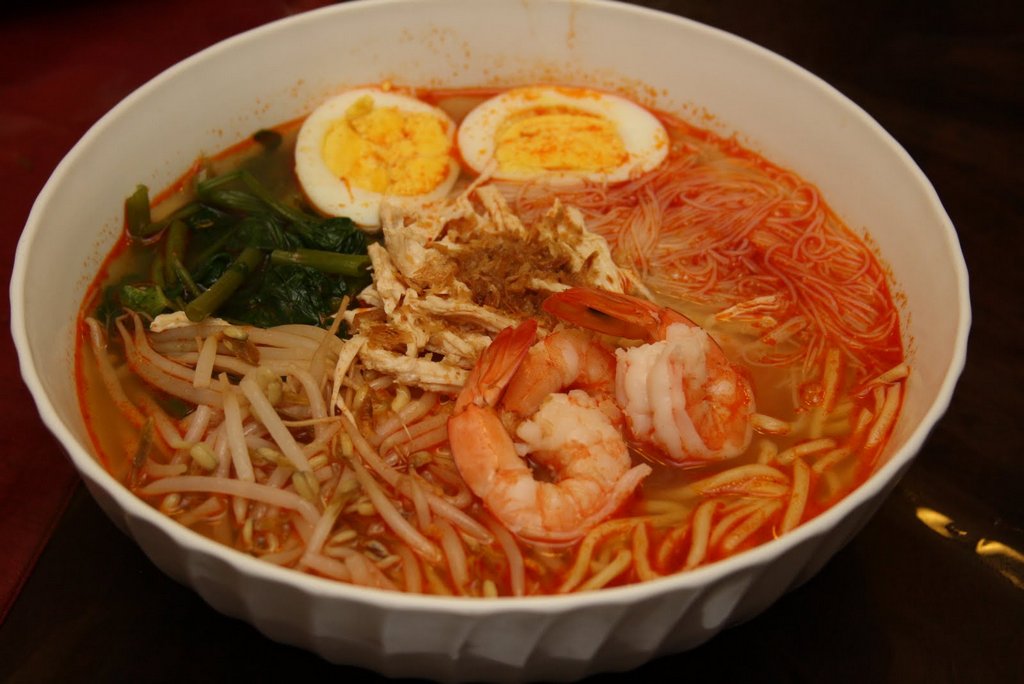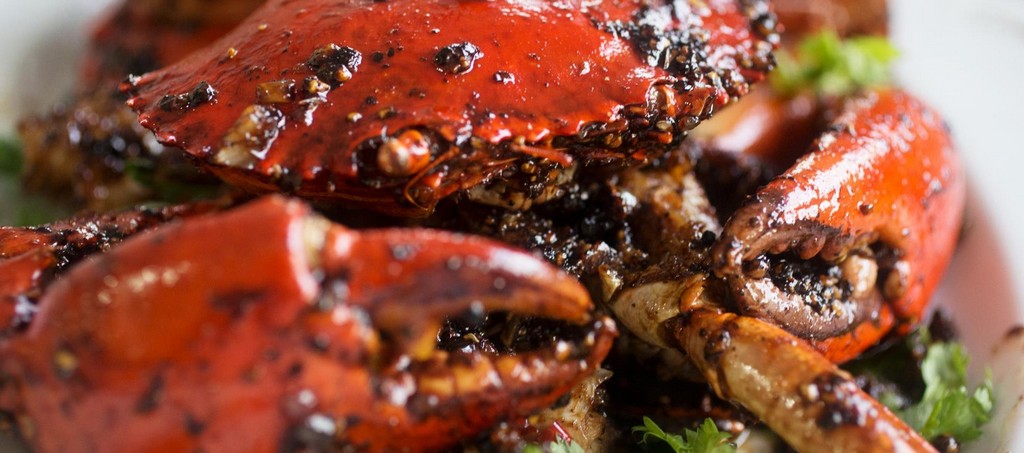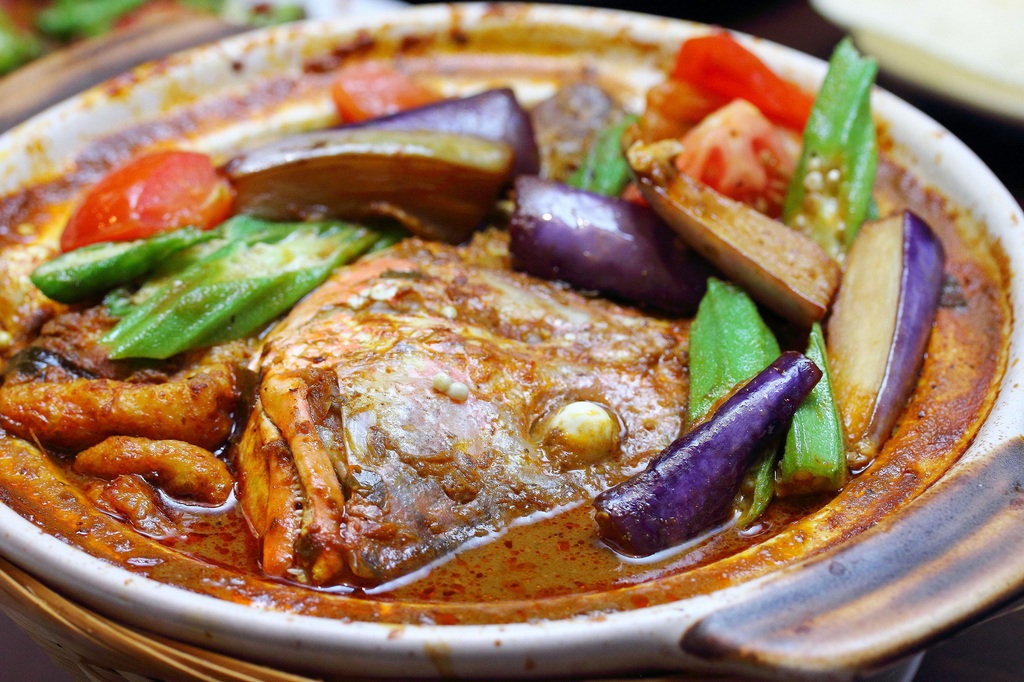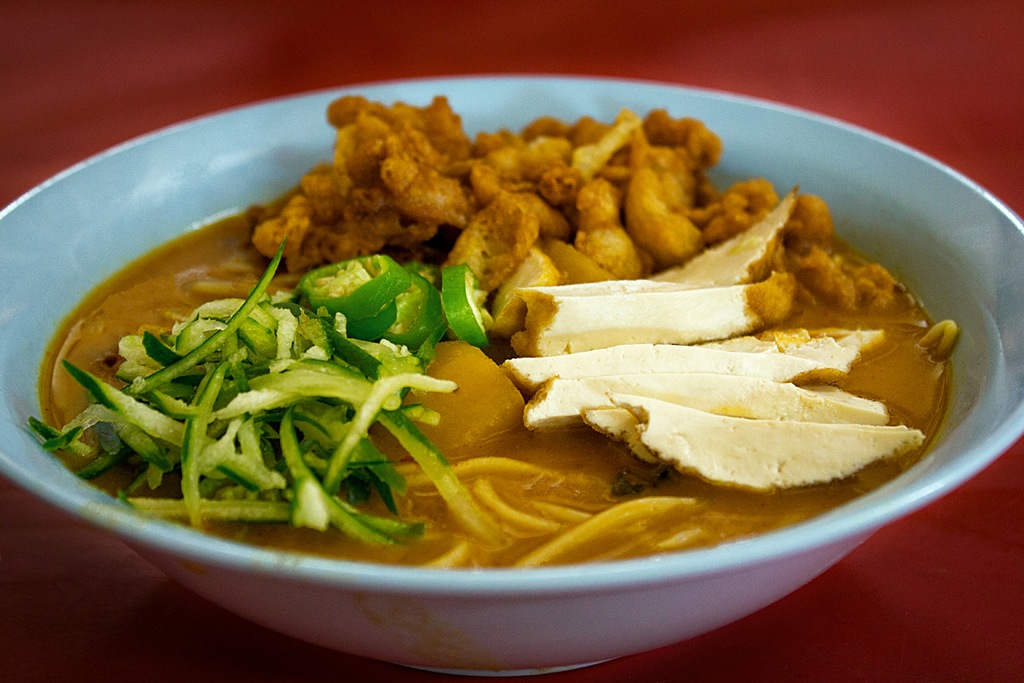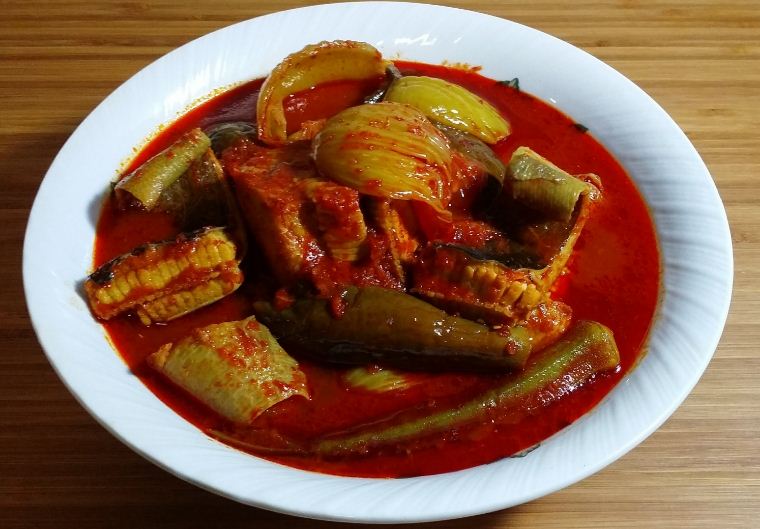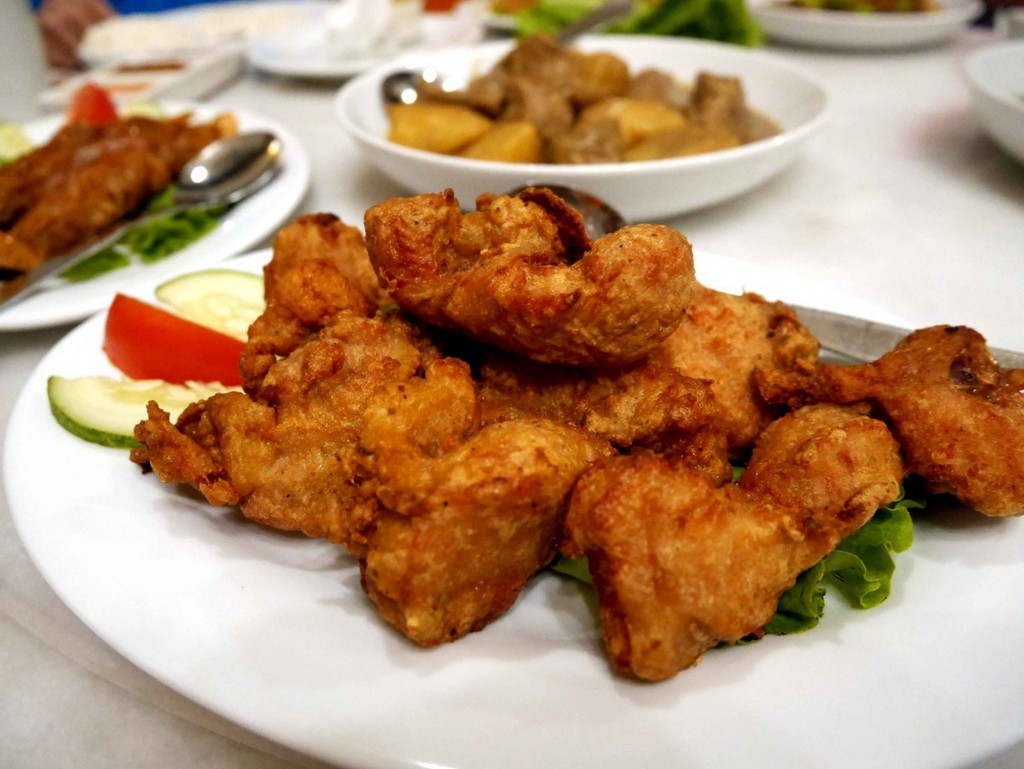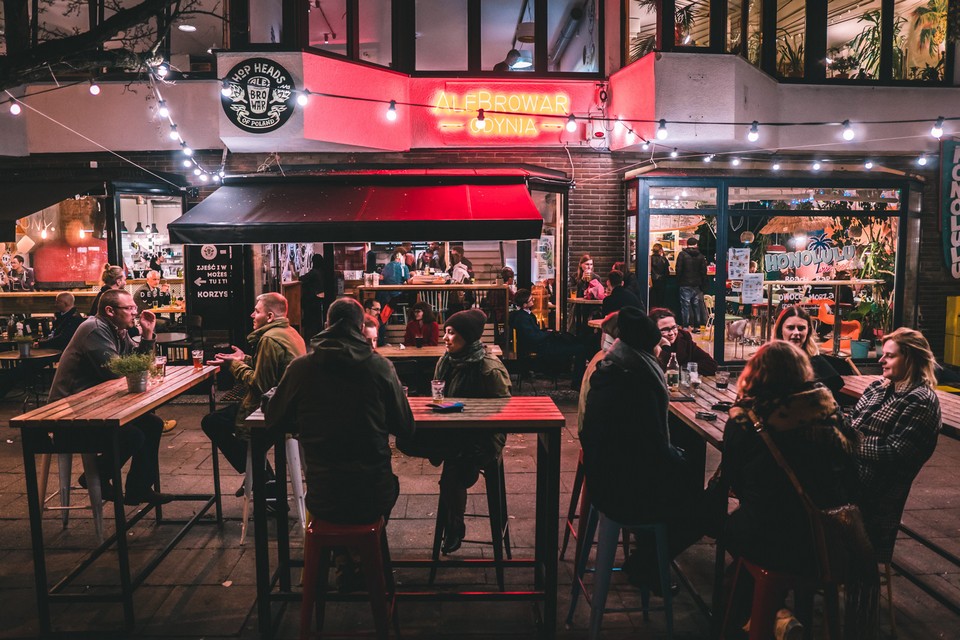When I first started jotting down notes for this post, scribbling in my notebook in an idle moment after breakfast, it was a list of “10 Malaysian Dishes You Should Know.” I certainly couldn’t have named you ten characteristic Malaysian foods before I’d gotten on a plane to Penang. And I liked the idea of a brief snapshot of what a person could eat in Kuala Lumpur or Melaka, or look for on a restaurant menu back in the States or Australia or anywhere else.
- Where to eat in Penang? 17 best places to eat & Penang best restaurants
- Langkawi food review — Yummy and cheap junk food at Langkawi Night Market
- Must eat in Georgetown — 10+ famous, must-eat & best street food in Georgetown, Penang
- Must eat in Melaka — 10+ famous Malacca street food & must try food in Melaka
- Melaka food blog — Experience Melaka delicacies, arrived at by Trishaw
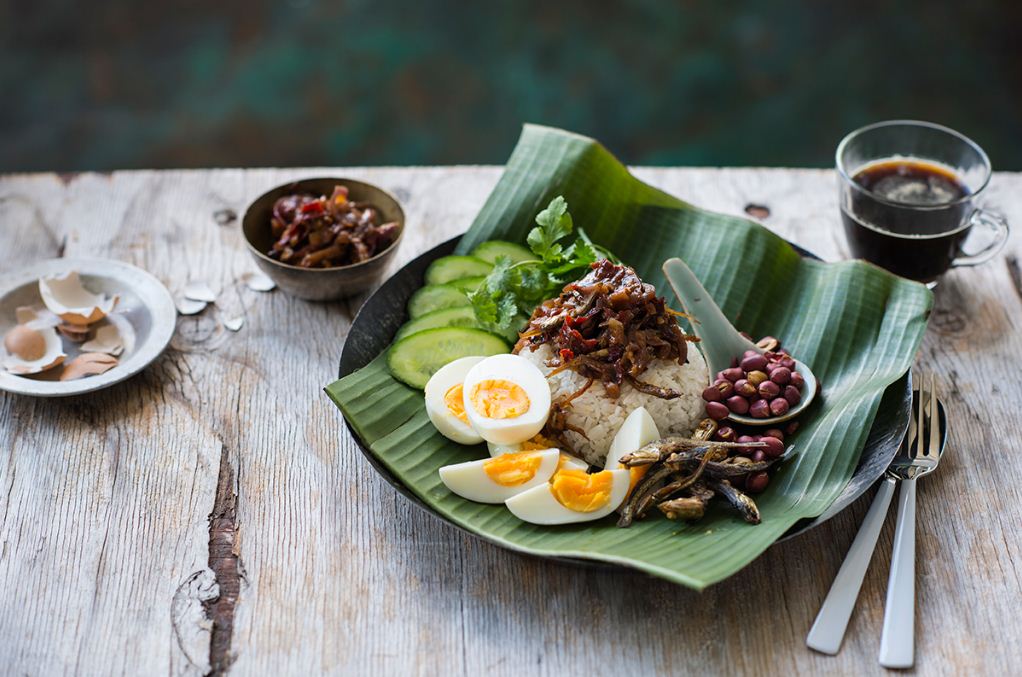
But after a few more days grazing in Penang, those ten dishes turned into fifteen. By the time I got to Kuala Lumpur, that list had sambal stains all over it… and six or seven more ideas to include. I couldn’t bear to leave any behind. “But how could I not mention satay? I have to mention satay. And how could I pick between laksas? And how could I leave out nasi goreng? And what if Serious Eaters never understand how good char kuey teow is?”
You get the idea.
So it’s easy to get carried away. But I’d like to defend myself: I’m not an indecisive self-editor or over enthused American. I’m just blown away by the richness of the food culture. When you’re talking about “Malaysian food,” as we’ve mentioned before, you’re talking about half a dozen things at once. Malay, Chinese, Indian—there are so many culinary traditions colliding in this nation that it’s impossible to sum it up neatly.
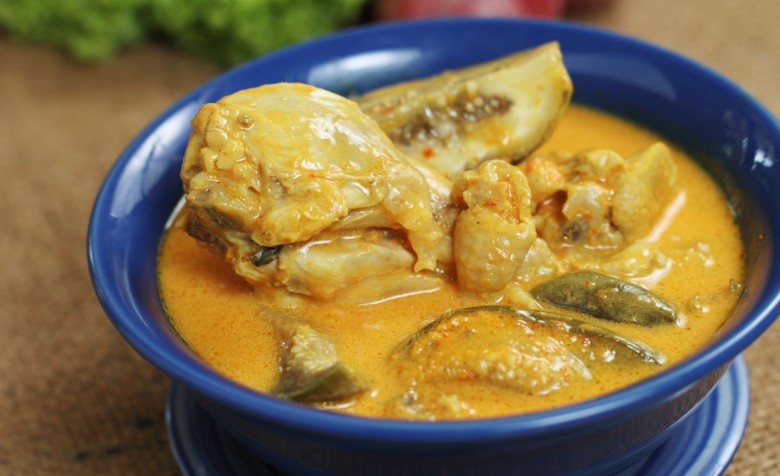
“We have many restaurants which serve Chinese food exactly the same as it is served, say, in Hong Kong,” says Penang-based food writer Helen Ong (view her website here); “On the other hand, certain dishes have been changed to suit local ingredients and tastes.” So some “Malaysian” eats may closely resemble foods characteristic of other Asian culinary traditions. Some seem like cross-cuisine mashups. Some are just their own thing altogether.
And in a country where the eating never seems to stop, you’ve got the opportunity to get to know quite a few dishes. “We are very proud of the fact that in Malaysia, we can eat up to six meals a day,” says Ong; “A typical day can start with breakfast, then elevenses, followed by lunch. A light bowl of noodles fills any gaps between 4pm and 5pm, and dinner is our main meal of the day.” Hawkers serve to that schedule. Some may appear only in the mornings, others after dark, even through breakfast and lunch and late-night foods aren’t really that different. In cities like Penang and Melaka, though, it’s no trouble to find street food at any hour of the day.

Lebuh Tamil, Georgetown, Penang.
The takeaway: There’s a lot to eat, and a lot of meals in which to do so.
So come get to know Malaysia a bit more. Here’s a tour through 25 dishes you should know—laksa and rendang are only the beginning.
Gallery: 25 Malaysian dishes you should eat
1. Roti canai
A classic Malaysian breakfast of Indian derivation, though this flaky finger food is good any time of day (and really good at about three in the morning). A dough of flour, egg, and ghee (clarified butter) is incredibly, almost unbelievably elastic; it’s stretched quickly into a tissue-thin sheet, like pizza dough but even more dramatic, then folded back up and griddled. In its best form, right off the griddle, it’s flaky and crisp like a good croissant on the outside, soft and steaming and a little bit chewy on the inside. It’s also served with curry, often lentil dal; other versions are cooked with egg, or onion, or sardines.
2. Chicken curry
A whole genre, rather than a distinct dish, you’ll find curries of all sorts on Malaysian tables, a bowl of rice usually not far away. Malaysian versions tend to start with a rempah, a complex paste of spices and aromatics that’s cooked together and forms the base of the curry; like so many of the country’s dishes, they tend to make use of coconut milk, too.
3. Roti jala
Thin, netlike crepes with turmeric and coconut milk, the batter quickly drizzled in concentric circles to form the elegant, delicate shape. (Learn to make them here!) They’re always served alongside another dish, like the curry we just met, though I harbor fantasies of making a pile and sprinkling them with cinnamon-sugar, or drizzling them with melted Nutella, or just buttering them and eating them plain for breakfasts
4. Asam laksa
There are endless varations of laksa, Malaysia’s beloved noodle soup, but there are two umbrella categories: asam laksa and curry laksa. The former, pictured here, has a tart tamarind-based broth and is generally cooked with a flaky white fish; noodles on the bottom, cucumber and pineapple and the bitter torch ginger flower to top. It’s a little diferent everywhere you get it: in Penang, pictured here, it’s often particularly tart and spicy; the city’s proximity to Thailand is reflected in their perchant for those flavors.
5. Curry laksa
The richer member of the laksa family, thanks to coconut. (Learn how to make curry laksa here!) The rempah (spice paste) of turmeric and ginger and lemongrass, chilies and belacan, imparts flavor to the coconut milk broth; along with noodles, it’ll be topped with shrimp, tofu puffs (that soak up the rich broth), cucumber, fish balls, and eggs.
6. Satay
“Wait, I thought satay was Thai!” Malaysians will proudly declare that they have the best satay, and that others have just been more successful at marketing it. (Thailand and Indonesia, to name two, might contest that.) But you’ll see satay all over the place in Malaysia, towering piles of skewers in hawker stalls that are tossed on the grill once you order. Penang food writer Helen Ong distinguishes Malaysian satay by its peanut-based “sweet and slightly piquant sauce” and the “meats marinated with local spices.”
7. Nasi lemak
As easy to find as a sandwich in America, nasi lemak could be considered Malaysia’s national dish—a little banana leaf parcel that cradles a bed of coconut rice with spicy sambal, crunchy dried anchovies (ikan bilis), roasted peanuts, cucumber, and egg (sometimes sliced of hard-boiled, sometimes cooked like a flat omelet). While considered classic comfort food, it’s a showcase of flavors and textures, from the delicate coconut to the brash belacan, the tender bite of rice and the salty crunch of anchovies. The simplest elements really matter here: rice that’s suffused with the flavor of coconut milk and sometimes further fragranced with pandan; sambal that’s bright-tasting and spicy but balanced. It’s often eaten as a breakfast food, but can be a snack at any time of the day, and to bulk it up, it might be served with a seafood or chicken curry, or vegetables, or beef rendang.
8. Popiah
Rolls of shredded turnip, jicama, and other crisp veggies, along with perhaps peanuts or egg or tofu, all wrapped in a thin, pliant wheat crepe.
9. Hainaese chicken rice
Like many of Malaysia’s signature dishes, it originated somewhere else (Hainan, natch) but adapted to suit local taste. It’s chicken boiled in stock and served cool alongside rice (which has also been cooked in chicken stock) and dipping sauce. “It is quite different than it is in Hainan Island–we have added chili to the ginger and garlic condiment it goes with,” says Malaysian food writer Helen Ong. “We like our food spicy!”
10. Mee goreng
Stir-fried noodles, which take many forms. You’ll often see yellow noodles quickly wok’d up with soy, garlic, shallots, and chilies; along with them might be shrimp or chicken, beef or vegetables. It’s fantastic street food; many hawkers use roaring charcoal fires, and their smoky flavor really makes anything cooked over it.
11. Beef rendang
A slow-cooked dry curry deeply spiced with ginger and turmeric, kaffir lime and chilis. (You’ll find chicken, vegetable, and seafood rendang as well.) In Malaysian fashion, it fuses sweet, sour, and savory elements, the curry picking up a creamy richness from two forms of coconut and an elusive tang from asam keping, slices of a sour sun-dried fruit. (Learn how to make it here!)
12. Nasi goreng
Rice stir-fried with chilis and garlic and kecap manis (sweet soy); like mee goreng, it might have chicken or shrimp for a little more substance. (I love it with a fried egg over the top.)
13. Char kuey teow
Probably the best thing I ate in Malaysia was a late-night snack of char kuey teow—frankly, I can’t imagine anything tasting better than rice noodles stir-fried in seconds over a smoking, sparking charcoal fire, taken to go and inhaled from a little paper parcel while walking down the street in Penang. The noodles join soy, chili, prawns, often cockles, the shrimp paste belacan, bean sprouts, and egg. Two things can distinguish really good char kuey teow from that which is merely delicious: one, the smoke of cooking over those charcoal fires, rather than over gas; and gracing the noodles with pork lard, which many (but not all) Chinese vendors still do. Penang will tell you that its char kuey teow is the best. I certainly haven’t done a comprehensive tour (man, that sounds fun), but from my limited experience, I won’t challenge Penang’s claim.
14. Ikan bakar
Translating to “burned fish,” ikan bakar is the catch-all term for small grilled swimmers. You’ll often see it wrapped in a banana leaf before it goes on the grill, so that the leaf gets direct heat contact, rather than the fish itself; it’s generally marinated in a blend of turmeric, chilis, belacan, galangal, and those other now-familiar ingredients, and served with sambal.
15. Oyester omelet
Also popular in Taiwan, Singapore, and parts of China, the oyster omelet is just what it sounds like—whipped-up eggs and oysters, and in some regions, potato starch, which thickens up the batter. As may not surprise you at this point, it’s often served with sambal.
16. Won ton mee
Cantonese in origin, but beloved in Malaysia. Here’s another example of a dish that varies around the country. In essence, it’s a dish of noodles with pork, and broth and won tons, but just how it fits together varies; in a dry version (pictured here), the noodles are stir-fried with thick soy sauce and pork lard, with more pork on top, and a dish of broth and dumplings on the side; alternately, the noodles are served in the broth itself. I loved the fatty-sweet dynamic of these noodles, sticky dark soy commingling with lard for a slick, savory sauce that clings lightly to each strand.
17. Pasembur
Can be thought of as “Pile Of Fried Stuff.” Pass a pasembur stand and you’ll see any number of hard-to-identify golden brown crispy things (like a Denny’s menu!); order a pasembur, and you’ll see them get hacked up, piled on a plate along with vegetables and such, and doused in a thick, sweet peanut-based sauce. Just what’s in one differs, but you might expect fried prawns, octopus, or squid; bean sprouts, shredded cucumber, and tofu; boiled potatoes or hard-boiled eggs. This guy is from Gurney Drive in Penang. (Elsewhere in the country, this dish might go by Rojak Mamak.)
18. Bak kut teh
Another adapted Southern Chinese dish, the soup, whose name translates to “meat bone tea,” is a long-cooked broth of pork ribs, with herbs, garlic, and spices that usually include cinnamon and star anise. It’s so rich from all that pork fat that, in many parts of Malaysia, it’s always served with hot tea to cut the richness. Add-ins might include tofu puffs or mushrooms, but really, falling-apart pork in equally porky broth is the main attraction.
19. Hokkien mee
If you thought laksa was complicated, try Hokkien mee. What all versions have in common: noodles. And that’s about it. In Penang (pictured here), it’s an egg and rice noodle soup in a rich, savory shrimp stock; a pile of prawns, hard-boiled eggs, and bean sprouts bulk it up, fried shallots lend a salty crunch, and sambal (of course) adds acid and heat and even more shrimpy flavor. In Singapore, it’s a dry dish with many of the same ingredients, but stir-fried rather than submerged in broth, with pork and squid as well as shrimp. In Kuala Lumpur? There’s Hokkien char mee, another dry dish, where the noodles are stir-fried with dark soy, pork and squid—and, the best part, little bits of pork lard that get crisp and melty.
20. Chili crab and black pepper crab
Dishes that Singapore will definitely claim as its own; given the two nations’ proximity and shared history, however, it’s little surprise that there’s a great deal of culinary overlap. Whether you call it “Singaporean” or “Malaysian,” there’s no doubt that these spiced crab dishes are very popular in Malaysia (though, as always, they’ll appear in slightly different forms around the country). The crabs tend to be pre-cooked, often steamed, then stir-fried in either a chili- and ketchup-based sauce (often with garlic and with tamarind to add a sour element) or a savory sauce heavily laced with black pepper. Served shell-on, they’re tremendously messy, but that’s part of the fun.
21. Fish head curry
Just what it sounds like. (You have to love those little teeth peeking out… see them at the bottom?) A whole fish head is stewed with vegetables and, often in Malaysia, tamarind (for that sour hit) and coconut milk (keeping things rich). It’s another dish that Singapore will claim as their own.
22. Mee rebus
Another cooked noodle dish, it’s “very popular as a mid-afternoon snack,” according to Helen Ong, and generally sold by Muslim Indian vendors. The yellow mee noodles are doused in a sauce of sweet potato and tomato, cooked (as are so many dishes) with a fried chili-based rempah. It’s topped with fried egg, calamansi lime, fried tofu, fried shallots, and bean sprouts.
23. Sambal udang
I love this dish in that it proves how compelling the most basic Malaysian flavors can be. Sambal is that blend of chilies, the shrimp paste belacan, and Calamansi lime that’s served with just about every dish and on just about every table; here, it’s quickly stir-fried with shrimp to impart all of those flavors. Fresh shrimp are pleasantly cooling against the spicy sambal—which just makes me go back for more sambal, of course. You’ll also see plenty of other things sambal-ed: squid, sting ray
24. Asam pedas
Another dish that makes use of the sour-spicy-fishy trinity. Fish and, usually, okra are simmered in a tamarind-based broth that, as in so many dishes, starts with a pounded spice paste of chilis and roots and belacan.
25. Fried chicken
Of all kinds. Seen here is the Nyonya-style inche kabin, spiced with turmeric and coriander before it’s deep-fried, and served with—I love this—a dipping sauce of mustard, Calamansi lime, and Worcestershire sauce. (The British left a lot behind.) More conventional ayam goreng, crisp fried chicken, is so popular that it’s on the McDonald’s Malaysian menu.

































